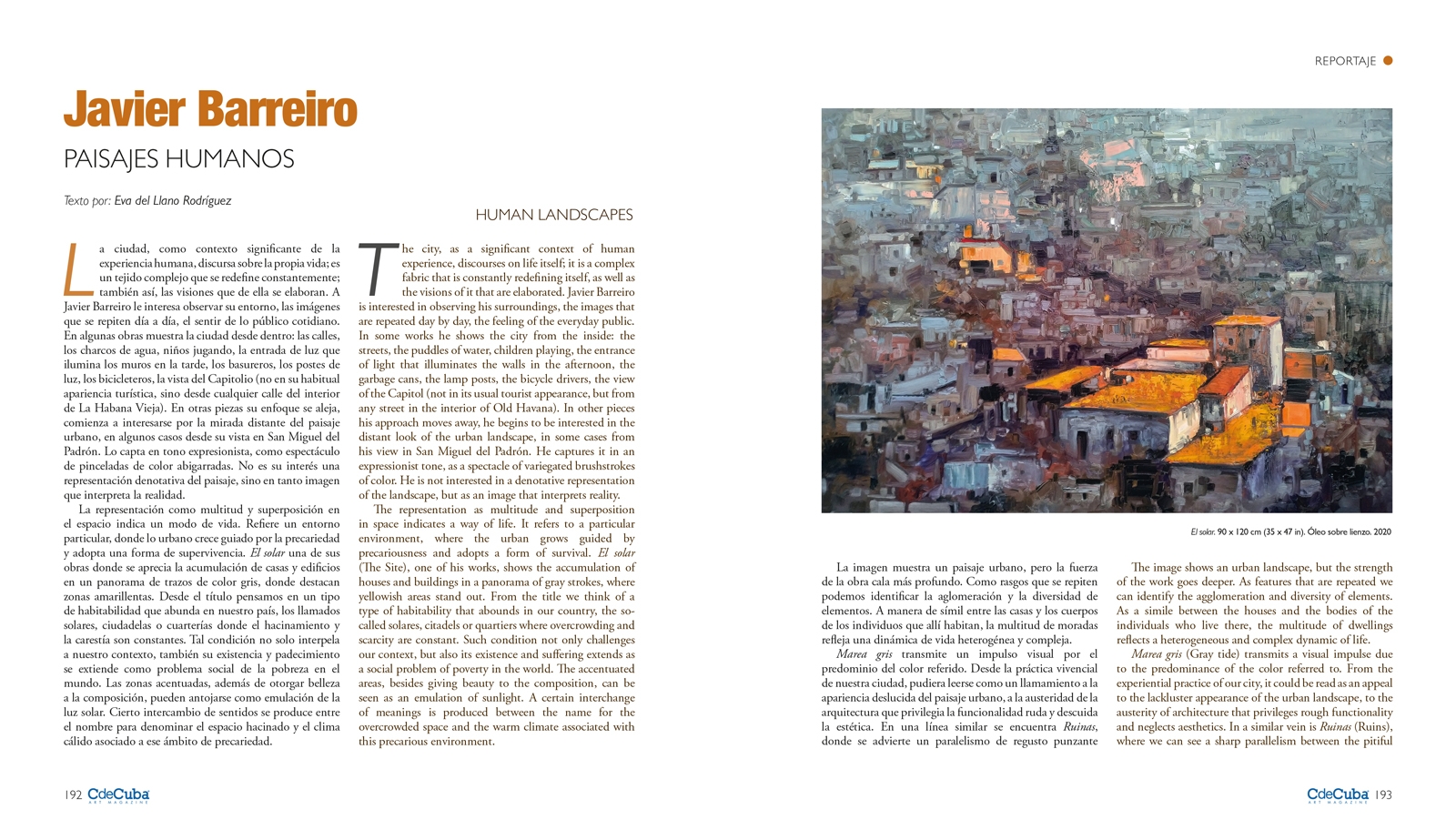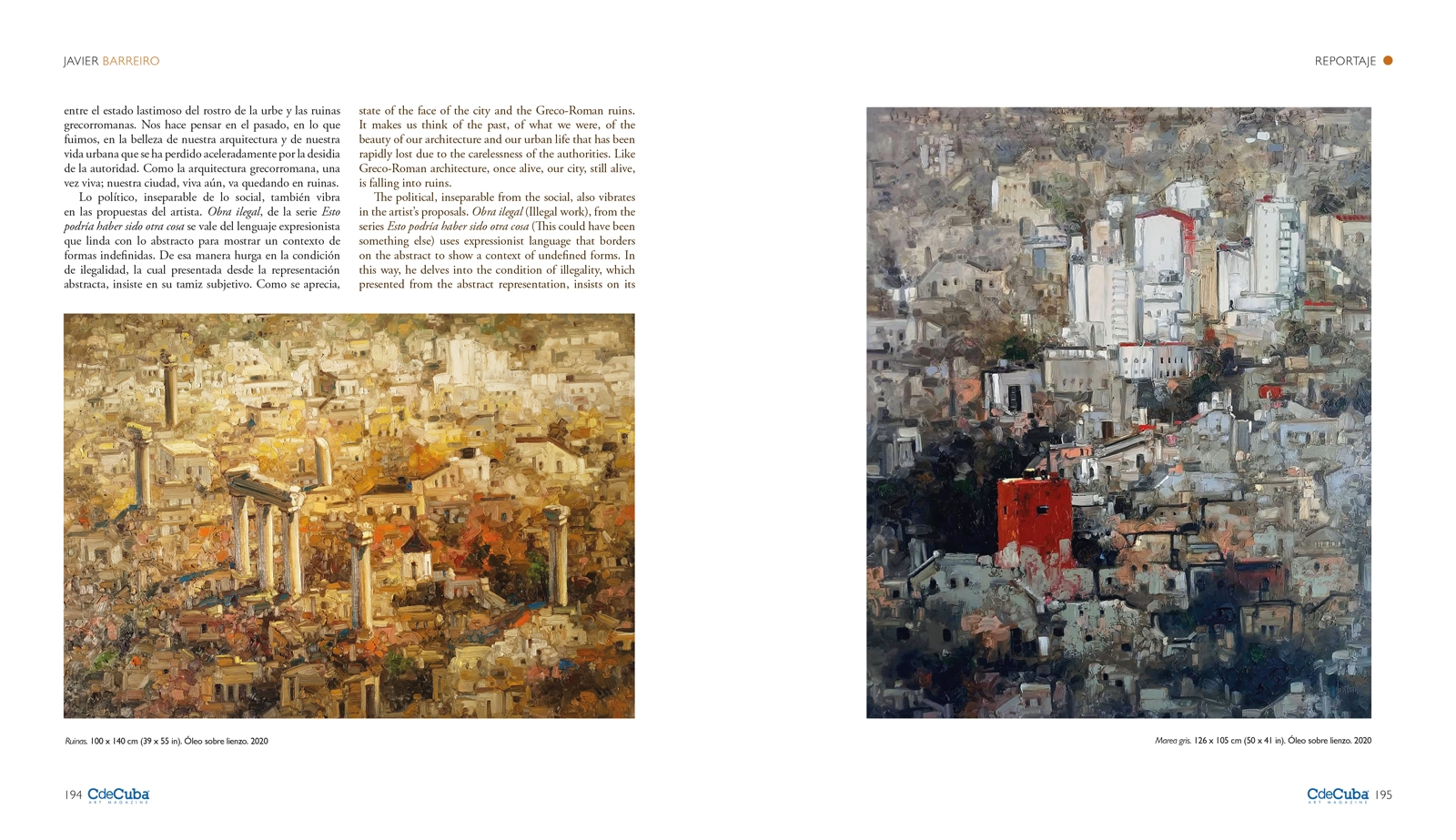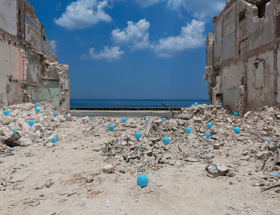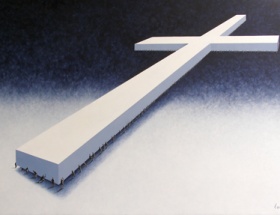Human Landscapes
By Eva del Llano Rodríguez
The city, as a significant context of human experience, discourses on life itself; it is a complex fabric that is constantly redefining itself, as well as the visions of it that are elaborated. Javier Barreiro is interested in observing his surroundings, the images that are repeated day by day, the feeling of the everyday public. In some works he shows the city from the inside: the streets, the puddles of water, children playing, the entrance of light that illuminates the walls in the afternoon, the garbage cans, the lamp posts, the bicycle drivers, the view of the Capitol (not in its usual tourist appearance, but from any street in the interior of Old Havana). In other pieces his approach moves away, he begins to be interested in the distant look of the urban landscape, in some cases from his view in San Miguel del Padrón. He captures it in an expressionist tone, as a spectacle of variegated brushstrokes of color. He is not interested in a denotative representation of the landscape, but as an image that interprets reality.
The representation as multitude and superposition in space indicates a way of life. It refers to a particular environment, where the urban grows guided by precariousness and adopts a form of survival. El solar (The Site), one of his works, shows the accumulation of houses and buildings in a panorama of gray strokes, where yellowish areas stand out. From the title we think of a type of habitability that abounds in our country, the so-called solares, citadels or quartiers where overcrowding and scarcity are constant. Such condition not only challenges our context, but also its existence and suffering extends as a social problem of poverty in the world. The accentuated areas, besides giving beauty to the composition, can be seen as an emulation of sunlight. A certain interchange of meanings is produced between the name for the overcrowded space and the warm climate associated with this precarious environment.
The image shows an urban landscape, but the strength of the work goes deeper. As features that are repeated we can identify the agglomeration and diversity of elements. As a simile between the houses and the bodies of the individuals who live there, the multitude of dwellings reflects a heterogeneous and complex dynamic of life.
Marea gris (Gray tide) transmits a visual impulse due to the predominance of the color referred to. From the experiential practice of our city, it could be read as an appeal to the lackluster appearance of the urban landscape, to the austerity of architecture that privileges rough functionality and neglects aesthetics. In a similar vein is Ruinas (Ruins), where we can see a sharp parallelism between the pitiful state of the face of the city and the Greco-Roman ruins. It makes us think of the past, of what we were, of the beauty of our architecture and our urban life that has been rapidly lost due to the carelessness of the authorities. Like Greco-Roman architecture, once alive, our city, still alive, is falling into ruins.
The political, inseparable from the social, also vibrates in the artist’s proposals. Obra ilegal (Illegal work), from the series Esto podría haber sido otra cosa (This could have been something else) uses expressionist language that borders on the abstract to show a context of undefined forms. In this way, he delves into the condition of illegality, which presented from the abstract representation, insists on its subjective sieve. As can be seen, the only identifiable thing is the flag, the rest is imprecise. With this, he questions illegality from the image of the flag as a reference to a context in which its representation is polemic. If it is re-presented, is it not conceding its importance and the need to think about it from the present? A series of questions may emerge from the tension between illegality/censorship and freedom, the inaugural value raised by this three-colored piece of cloth that identifies us as a nation.
The phrase It could have been something else as a reflection conveys a state of disappointment in the face of reality; but at the same time it is an opening to the possibility and the will to change, to revolutionize the stillness of representation, and to begin with the potentiality of the abstract, which can become something else.
Everyday life needs to be accompanied by an awareness of the political frameworks in which we participate and which determine us as individuals in a social environment. Javier Barreiro’s examination of his surroundings channels these concerns. The city serves as a motif of discourse: the image he projects of it activates meanings that go beyond the architectural and reach the realm of life itself.






